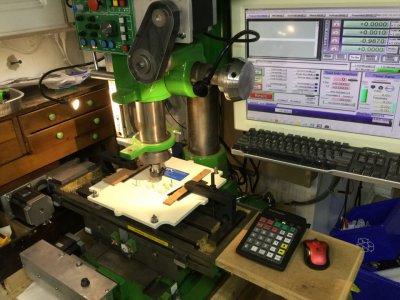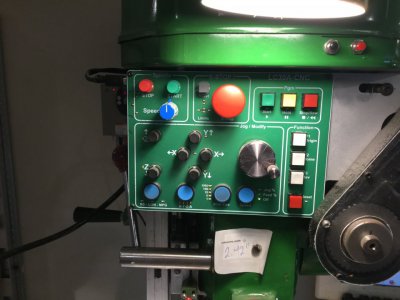- Joined
- Aug 13, 2020
- Messages
- 1,342
This may be the same as for cutting on any other mill, but I have a WrongFu, round-column clone, so that is all I can talk about.
The task is to cut 3in holes in eight 3/4" plate. All plates are identical, and have been machined to size on the outside.
The task is to cut 3in holes in eight 3/4" plate. All plates are identical, and have been machined to size on the outside.
- Set the plate in the vice on parallels, using a vice stop to indicate the hole position.
- Drill a 1/4" to 3/8" hole on each side of where the hole is going, just inside the cut, and spot drill for the center mark. Do one hole across all eight before moving to the next hole. This is where the vice stop is invaluable.
- Select a hole saw that is at least 1/8" or so SMALLER than the target hole size. This will result in the kerf running over the holes drilled in step 2, so that most of the removed material will drop through them. The hole saws leave a TERRIBLE finish, so we want to undersize it to leave material for clean up. Make sure to use the center bit on the hole saw. It helps to locate and steady the saw, especially as you start the cut.
- Spin the hole saw at a slow speed (200rpm for around 3")
- Feed the saw using the fine feed instead of the hand crank. This feels like drilling, but it really isn't. The hand crank doesn't give you control, resulting in the saw constantly digging in and stalling the mill. When it digs, it raises burs inside the kerf slot that then try to tear the teeth off the saw when it starts back up. The fine feed allows for a constant cutting pressure that you can definitely feel as you feed it in. You can even see when the mill starts to bog down and just pause for a second to let it catch up, and then continue to feed (but slower).
- Once all the holes are cut, switch over to a boring head and bore to size. If it takes multiple passes, adjust the head and pass all eight parts through before adjusting for a larger pass.


